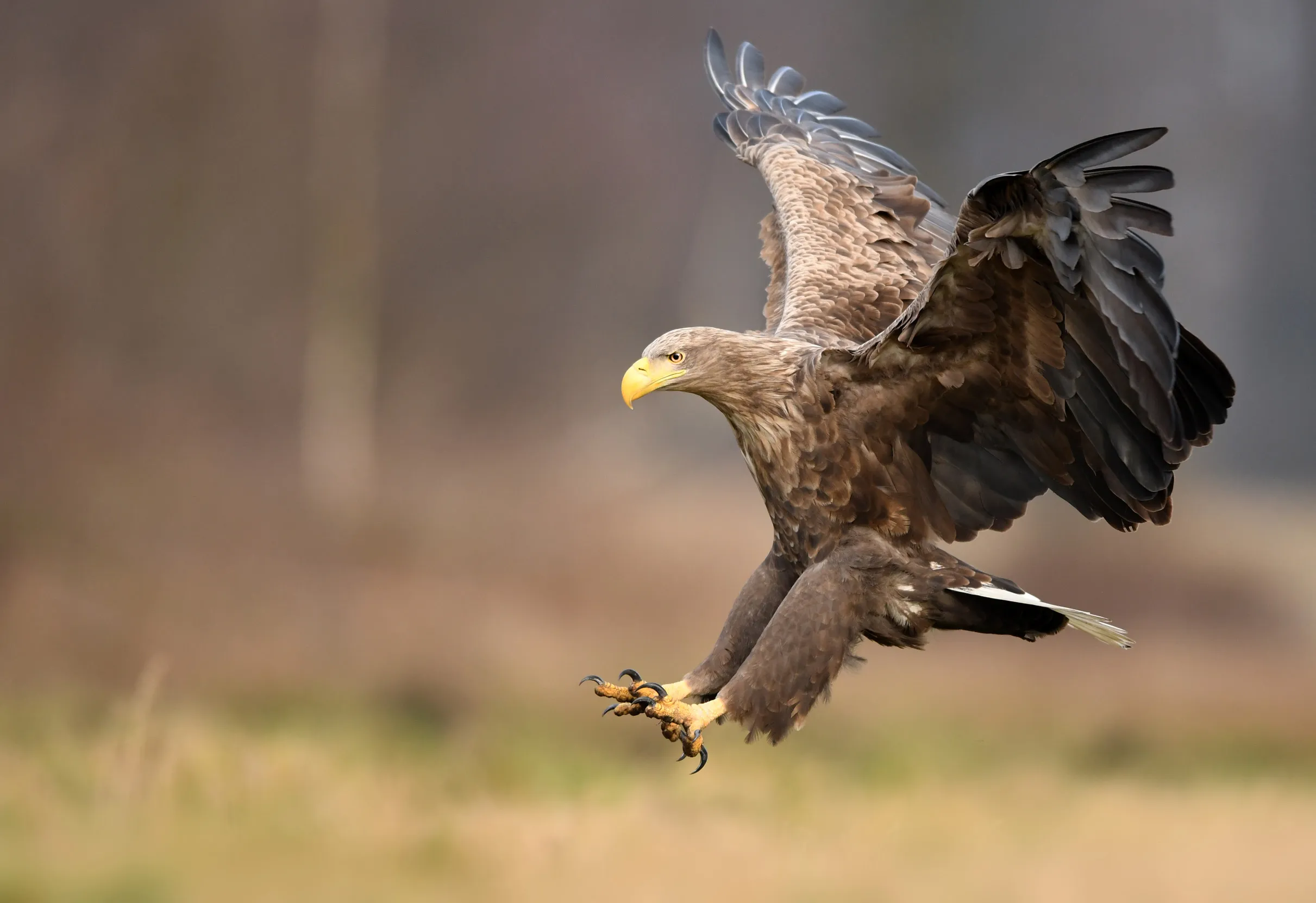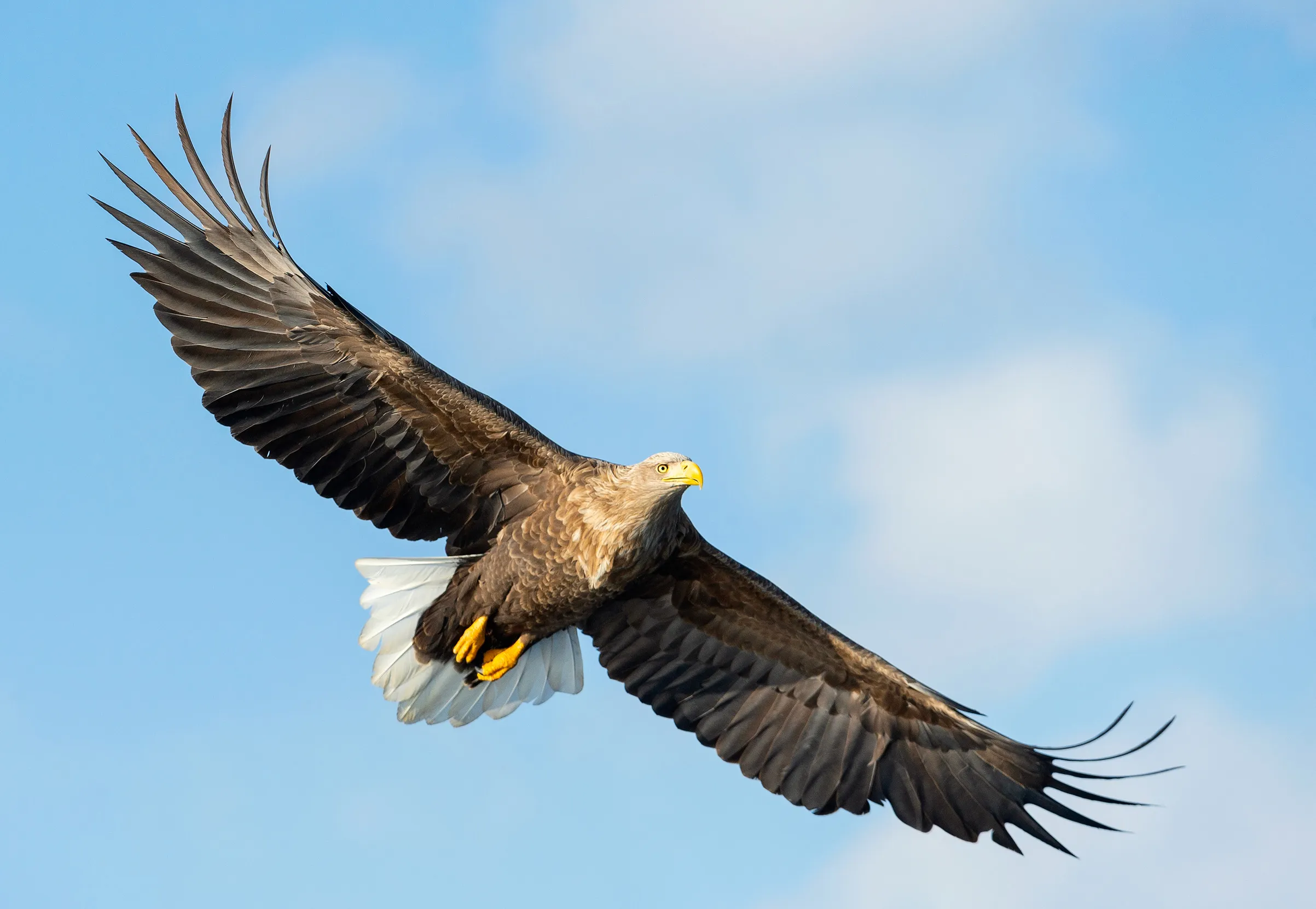News
White-tailed Eagles disappear in suspicious circumstances
£20,000 reward offered for information that leads to a conviction in these cases.
Lambs aren’t a major part of the diet of breeding White-tailed Eagles a new study has found. But what are they eating and how will this latest study help protect the UK’s biggest bird of prey?

Lambs aren’t a major part of the breeding season diet of White-tailed Eagles, an important new study has found. But what are they eating and how will this latest study help protect the UK’s biggest bird of prey?
White-tailed Eagles, or Sea Eagles, are massive. These ‘flying barn doors’ are one of the UK’s most spectacular species, with wings that can span 2.4m. They were finally persecuted to extinction here in the early 20th century, but after reintroductions starting in 1975 there are now around 150 pairs, found mainly in Scotland.
What they eat depends to some extent on what’s around. They’re opportunistic eaters, catching their own prey as well as scavenging carrion. They will sometimes steal food from other birds and even otters. Their varied diet is essential because they need a lot of food to survive. During the breeding season while they’re rearing young, they each require 500-600g of food per day!

Some White-tailed Eagles are known to occasionally eat lambs, and although most are scavenged as carrion, some may be taken alive. However how many has proved hard to establish. This has brought the eagles into conflict with farmers and crofters, with concerns raised about the impact on livestock. The new study wanted to find out what made up their diet in the breeding season as the eagle numbers increase and their range extends.

Recently published research gives us new data on what these huge birds feed their chicks when breeding. The 20-year study began when there were only 18 pairs of White-tailed Eagles in Scotland, mostly in the Inner Hebrides. The research shows over the last two decades, as White-tailed Eagle numbers have increased, the proportion of lamb remains found in nests has declined. Overall lambs now only make up on average 6% of the remains recovered per nest. In 2017, the samples of remains taken from 58 nests during the breeding season showed only five had 30% or more of lambs’ remains.
A previous study found that inexperienced birds from the first round of releases in the 1970s and 1980s were attracted to areas where dead or dying lambs or sheep were readily available. Now, this new study has found that new generations of eagles are breeding in areas where natural live prey is more readily available, with a change in diet as a result.
The full study recorded 293 samples of food remains from 92 nest sites across Scotland. In total there were 11,375 food items recorded made up of 121 species. Of these 67% were birds (70 species), 27% were mammals (17 species) and 6% were fish (at least 30 species).
The findings show that seabirds and fish are the most important food source for White-tailed Eagles. The most common species found in nests was Fulmar – this made up 30% of remains studied per nest.
But there was a difference in diet depending on where the nests were located. Nests studied along the coast showed seabirds and fish made up most of the food remains. At nests further inland, wetland birds and rabbits were more common. And as White-tailed Eagles continue to recolonise historic territories away from the coast, the study says species such as Mountain Hare and freshwater fish are likely to become important food sources.

This latest study The breeding season diet of White-tailed Eagles in Scotland, was published in the Scottish Ornithologist' Club journal Scottish Birds. It helps create a clearer picture of the diet of the eagles and also what measures are needed to support farmers and crofters in areas where White-tailed Eagles are present. The study will help inform the reviewed and updated Sea Eagle Management Scheme (SEMS) which is set to come out next year (2024).
Duncan Orr-Ewing, Head of Species and Land Management at RSPB Scotland and member of the National Sea Eagle Stakeholder Group said; "This study will be invaluable for an evidence-based approach when drawing up the next Sea Eagle Management Scheme and targeting of available resources to geographical areas where support is most needed. We also hope that the results of this study will provide some reassurance to farmers and crofters in connection with their concerns about livestock predation and when noting the largely natural diet of most breeding White-tailed Eagles in Scotland".
This new research concentrates on breeding White-tailed Eagles in Scotland, so in the future it’s hoped there’ll be further studies into the diet of juvenile or immature White-tailed Eagles and adults outside of the breeding season. This may be informed by following birds with tracking devices fitted.
With young White-tailed Eagles now released on the Isle of Wight, with partners the Roy Dennis Wildlife Foundation and Forestry England, their behaviour can be tracked too. These juvenile birds were fitted with satellite tags which means experts can build up an accurate picture of where they go and their survival rate. To date, there have been no instances of livestock predation associated with these birds.